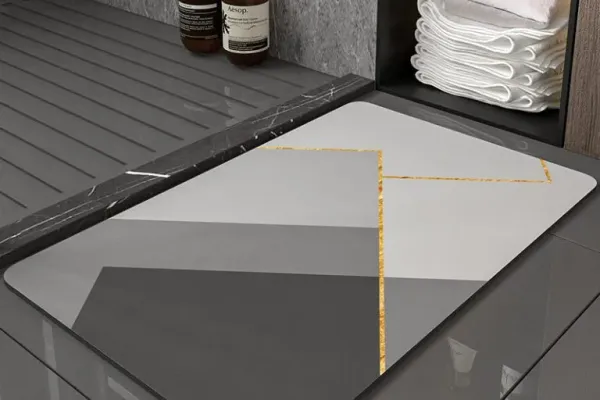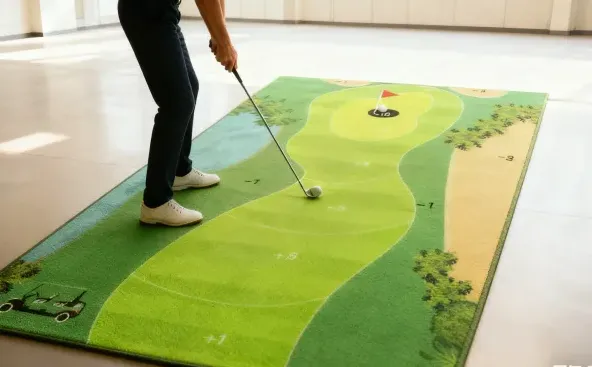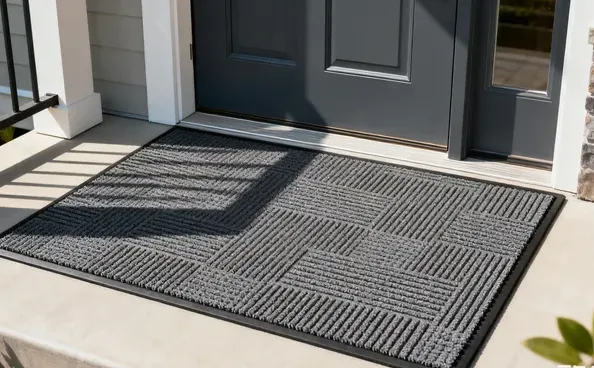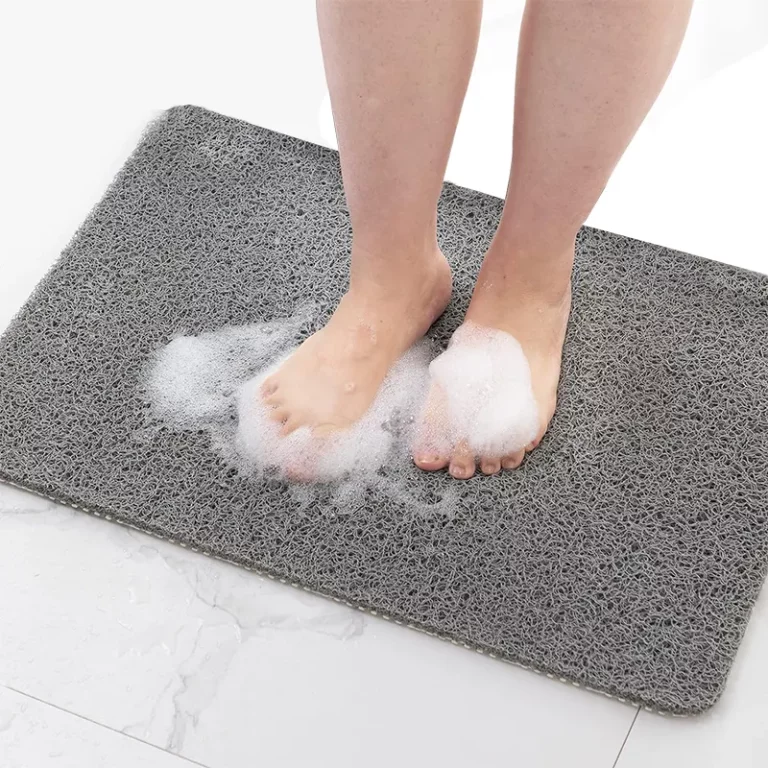I recall stepping onto a damp, slightly musty bath mat one morning. It felt unpleasant, and I started wondering if it was hygienic. After some research, I realized I needed a mat that dries fast and resists mold growth. For many, a PVC or rubber bath mat is the top choice for maintaining cleanliness in a moist environment. These materials provide a firm grip on slippery floors, do not absorb water as easily as fabric mats, and require minimal upkeep to stay fresh.
A sanitary bathroom mat should be water-resistant, easy to clean, and tough enough to withstand daily use. PVC and rubber mats meet these criteria. They do not trap as much moisture, helping prevent mildew. With proper care—like regular rinsing and drying—a PVC or rubber mat can remain odor-free and mold-resistant for a long time.
Below, we explore common questions about bathroom mats, the benefits of PVC and rubber, and how to keep these mats in great shape for a more hygienic bathroom.
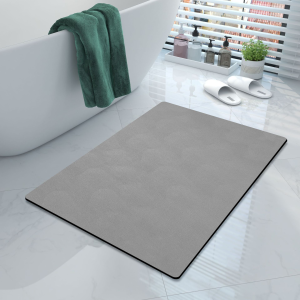
Is it good to have a bath mat in the shower?
Many wonder if placing a bath mat directly inside the shower is actually helpful. On one hand, a mat provides traction, cutting slip risks. On the other hand, some fear that a mat might trap water, soap scum, or bacteria. PVC or rubber mats are designed specifically to handle this wet environment.
Shower Mat Pros and Cons
Let’s consider why a mat inside the shower can be beneficial—and when it might be a nuisance.
Professionisti
-
Improved Safety1
Stepping onto slick, soapy shower floors is a major slip hazard. A mat with strong traction points or suction cups can stabilize your footing. I once slipped trying to reach for shampoo and realized how essential a secure surface is. PVC and rubber mats often have textured surfaces designed for grip. -
Gentle on Feet
Hard tile floors can be cold or harsh underfoot, especially in the morning. A soft rubber or PVC mat provides cushioning. It’s more comfortable to stand on, reducing foot fatigue if you shower for longer periods. -
Protecting Shower Surfaces
Over time, repeated friction from feet can degrade certain bathtub coatings. A mat acts as a buffer between feet and tub, minimizing scratches. For older bathtubs prone to scuff marks, a mat can extend the tub’s life.
Contro
- Moisture Trapping
If you fail to lift and dry the mat regularly, water can accumulate underneath. This stale moisture fosters bacterial or mildew growth. Over time, the underside might develop slime or an odor. - Potential Staining
White rubber mats can, in rare cases, leave marks on porous surfaces. Fortunately, modern PVC mats typically avoid this issue if properly cleaned. - Regular Cleaning Needed
Any item left in a damp environment must be washed and dried consistently. If you’re looking for zero maintenance, shower mats might feel like extra work.
(Small Tip)
If you decide to keep a mat inside the shower, choose one specifically labeled for in-shower use—particularly rubber or PVC. After each shower, briefly rinse it to remove soap residue, then hang it over a rail or on the side of the tub to drip-dry. This habit greatly reduces mold growth and keeps the mat fresher.
How long can a diatomite mat last?
Diatomite, or diatomaceous earth, gained popularity as a sleek, stone-like mat that absorbs water from feet almost instantly. But how does it compare to PVC or rubber in terms of longevity and hygiene?
Understanding Diatomite Mat Lifespan vs. PVC/Rubber
Diatomite mats rely on a porous structure that pulls moisture away from the surface. They feel dry to the touch within minutes after stepping on them, which is impressive for controlling puddles. However, these mats differ from PVC or rubber in both maintenance and lifespan.
Diatomite Mat Durability
- Potential Cracking
Diatomite is somewhat brittle compared to flexible PVC or rubber. If you drop it or place it on an uneven floor, micro-cracks can form over time. Repeated stress may lead to visible cracks, shortening the mat’s lifespan. - Surface Erosion
The top layer can wear down if frequently scrubbed with abrasive tools. Since diatomite works by absorbing water into its micro-pores, once those pores clog or erode, water absorption slows.
Care Requirements
- Periodic Sanding
Some diatomite mats require light sanding to restore their absorbent surface. This helps remove stains and unclog pores but can be tedious if you prefer minimal upkeep. - Avoid Soaking
Extended submersion in water is not recommended. The material can become oversaturated, and drying it out may take a while, potentially causing cracks.
Comparison to PVC or Rubber
- Longevità
A high-quality PVC or rubber mat can last several years with routine cleaning. Rubber especially resists wear and tear, while PVC mats are typically easy to replace at a lower cost. Diatomite’s brittle nature might mean it has a shorter usable period if it’s heavily used. - Mold Resistance
Diatomite is mold-resistant if it stays dry between uses. However, in very humid or frequently used bathrooms, it might not fully dry out, potentially encouraging hidden mildew spots. - Sicurezza
PVC and rubber mats, with textured surfaces or suction cups, provide reliable slip resistance. Diatomite is often smooth, relying on dryness to prevent slipping. If it remains damp, it can become slick.
While diatomite mats have a unique, modern look, they may not last as long as flexible materials in a busy household. If you enjoy minimalistic design and don’t mind careful maintenance, they can be an attractive option. But for a straightforward, durable, and often more sanitary mat, PVC or rubber remain top choices.
Do bath mats get moldy?
I once discovered black spots under an old fabric bath mat. It was an alarming sign of muffa2. The bathroom’s constant humidity accelerates microbial growth, making any mat a potential target if neglected.
Why Mold Grows on Bath Mats and How to Prevent It
Mold thrives in moist, warm environments with limited airflow—descriptions that apply to many bathrooms. Stepping out of the tub or shower soaks the mat with water, and if that mat fails to dry quickly, fungus can take hold. However, the type of mat you choose significantly affects mold risk.
Causes of Mold on Bath Mats
- Trapped Moisture
Fabric mats with thick cotton fibers or plush piles trap water, creating a damp interior. Without thorough drying, the water remains for hours. Over time, bacteria and fungal spores multiply. - Lack of Ventilation
If your bathroom has no window or limited exhaust, moisture lingers in the air. Mats near the shower stay damp for much of the day. - Infrequent Washing
It’s easy to overlook the mat during cleaning routines. Letting weeks pass between washes allows mildew to spread unnoticed.
Why PVC or Rubber Fare Better
- Water Repellence
PVC and rubber do not absorb water into fibers. Most moisture stays on the surface and can be wiped or shaken away. - Faster Drying
With less water trapped, these mats tend to dry soon after contact, depriving mold of the consistent moisture it needs. - Easier Cleaning
Instead of machine-washing a bulky textile mat, you can just rinse a rubber or PVC mat under warm water or use mild soap. Drying it thoroughly afterward is simpler too.
Tips to Avoid Mold
- Hang the Mat
After each use, drape your mat over the tub or a railing. This step helps water drip off. - Weekly Rinses
Give rubber or PVC mats a quick rinse. This flushes away soap residue that might form a film conducive to fungal growth. - Occasional Deep Cleans
If you see any slime or discoloration, scrub the mat with a mix of warm water and mild detergent or vinegar. - Adequate Ventilation
Running an exhaust fan or opening a window after showers helps remove humidity.
(Practical Note)
In my experience, switching from a thick cotton mat to a slim rubber-based one slashed the mold issues in my bathroom. While I must still rinse it and let it air dry, it never soaks up water. That small change cut down on the musty smells and kept my floors safer.
How often should bathroom mats be washed?
I used to wash my bath mat only when it looked visibly dirty. That routine left it smelling less than fresh. With consistent moisture exposure, I soon realized a stricter schedule was necessary.
A good rule of thumb is to wash or rinse your bathroom mat at least once a week. PVC or rubber mats3 may only need a quick rinse and air-dry if there’s no visible dirt, whereas cloth mats might require more thorough laundering.

Setting a Cleaning Routine for Your PVC or Rubber Bath Mat
Bathroom mats sit in one of the most moisture-rich places in your home, absorbing water from showers or foot traffic. Over time, they gather soap residue, body oils, and general grime, making them prime real estate for bacteria and fungal spores. If you’re using a PVC or rubber mat, you’re already at an advantage—these materials resist heavy water absorption. But you still need a basic schedule to keep them sanitary.
1. Weekly or Bi-Weekly Rinse
At a minimum, remove the mat once a week. Rinse both sides with warm water. If soap scum or slippery film has built up, apply a mild detergent and gently scrub with a soft brush or sponge. This step dissolves any residue that might reduce the mat’s grip or produce foul smells. Rinse thoroughly to avoid leftover soap, which can become a slick layer on your next shower.
2. Thorough Drying
Always hang or drape your mat so air circulates around it. Letting water drip off quickly is the key. If you keep your mat lying flat on the shower floor, moisture can linger for days. Over time, that fosters bacterial growth or mildew pockets.
3. Deep Cleaning Occasions
If you see any discoloration or feel a slimy texture, it’s time for a more intense scrub. Soak the mat in a tub of warm water mixed with vinegar or a gentle cleanser. Let it sit for 15-20 minutes before rinsing. Vinegar acts as a natural deodorizer and mild antiseptic.
4. Frequency Adjustments
- Frequent Showers
If multiple family members shower daily, a rinse every few days might be wise. The heavier the usage, the quicker the buildup. - Drier Climates
If your bathroom ventilates well or you live in a low-humidity area, you might get by with a quick cleaning every two weeks. Just keep an eye on mold or odors.
(Small Human Touch)
Personally, I tie mat-cleaning into my weekly bathroom cleaning. It’s a small effort—just a quick rinse and a hang over the tub or balcony. Since I switched to a rubber-based mat, I’ve noticed fewer nasty odors and less slip risk. It feels more hygienic, and I’m not replacing mats as often.
—
Conclusione
Per un sanitary bathroom mat, PVC or rubber options stand out. They repel moisture, dry quickly, and are simple to clean, reducing mold and odors. With a little routine maintenance—like regular rinses and thorough drying—you can keep your bath space fresh and hygienic for the long haul.
-
Explore this link to understand how bath mats enhance safety and prevent slips in the shower, ensuring a secure bathing experience. ↩
-
Understanding the causes of mold can help you prevent it effectively. Explore this resource for detailed insights. ↩
-
Learn about the advantages of PVC or rubber mats, including their resistance to moisture and ease of cleaning. ↩

